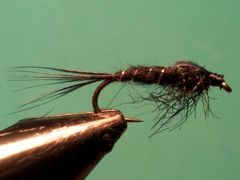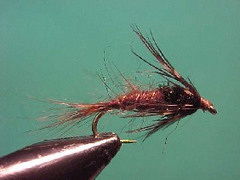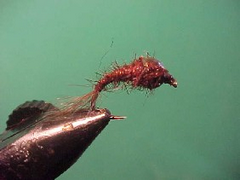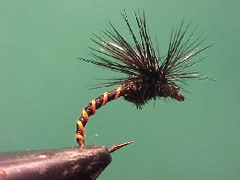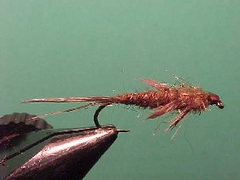Montana nymph – Chatto’s variant
I carry this fly in my lake box rather than my nymph box because I use it in lakes rather than rivers. For me it is a great middle dropper fly in a team of lock style flies in still water where the the flash of red, yellow, orange or pink in the thorax it make it a great attractor pattern.


